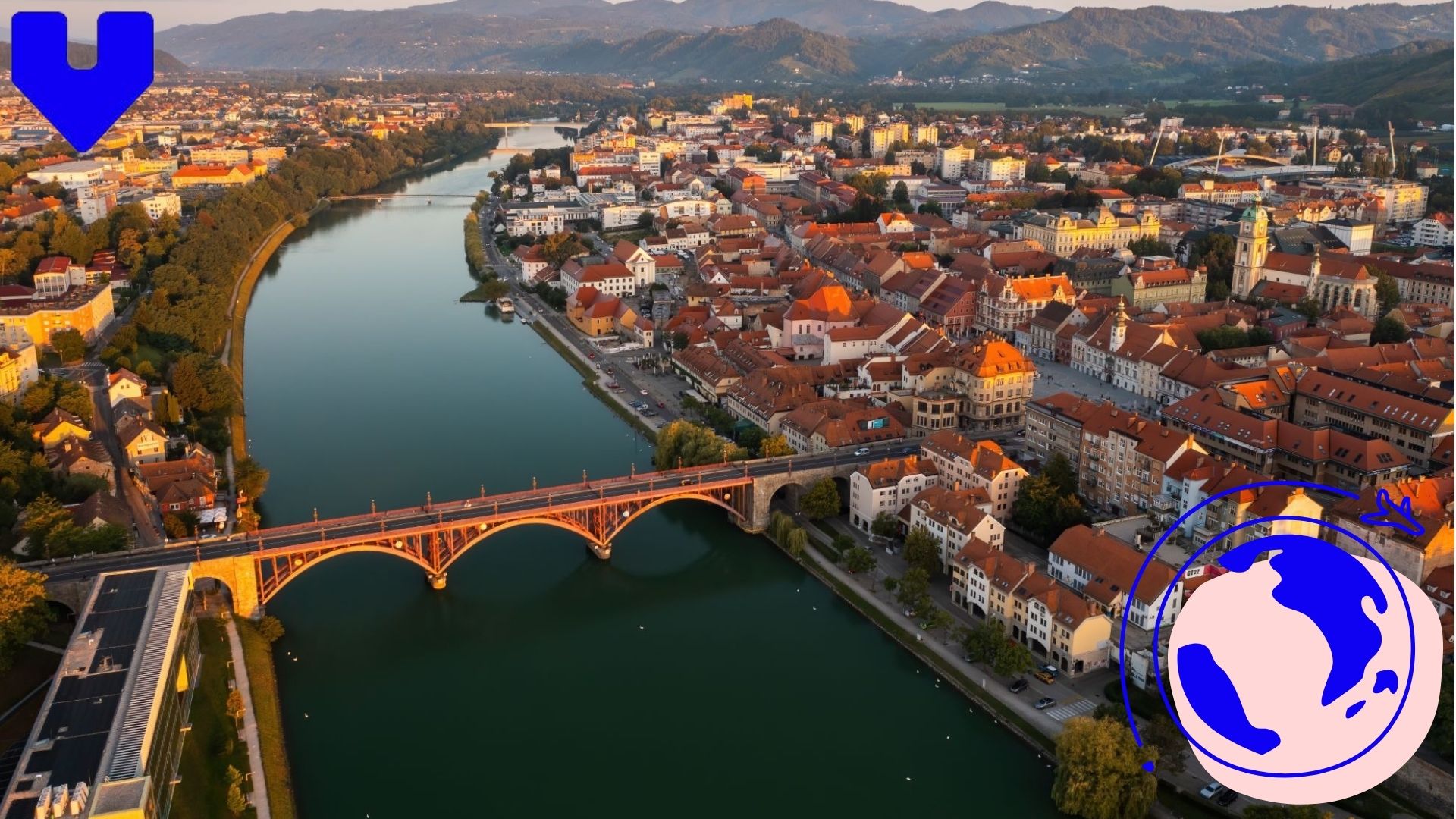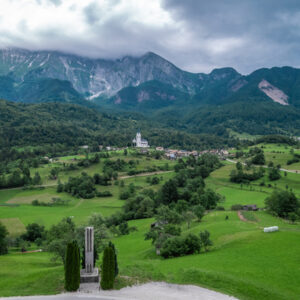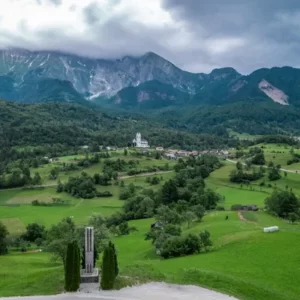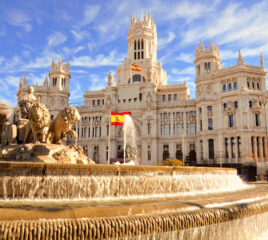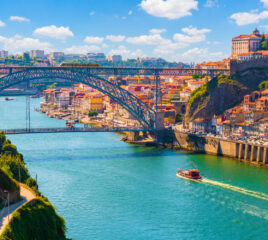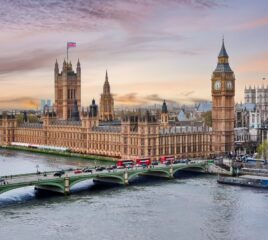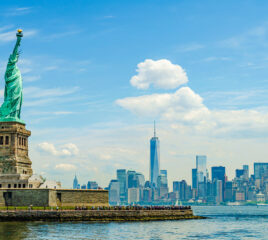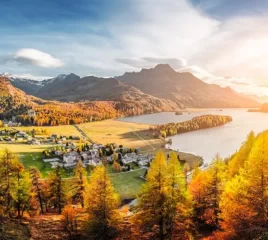Note that iPhone devices from Mainland China aren’t eSIM compatible. Also iPhone devices from Hong Kong and Macao aren’t compatible (except for iPhone 13 Mini, iPhone 12 Mini, iPhone SE 2020 and iPhone XS)
Slovenia might be small on the map, but it’s vast. With the Julian Alps rising in the north, emerald rivers winding through its heart, and the Adriatic Sea kissing its southwestern shore, the country offers a rare variety of landscapes and experiences in one compact package. Most visitors start and end their journey in Ljubljana – and while the capital is undeniably beautiful, it’s just the opening chapter of Slovenia’s story.
Beyond Ljubljana lie cities that may be lesser-known but are no less captivating. They are places where medieval architecture remains part of daily life, where festivals transform entire neighbourhoods into open-air celebrations, and where regional cuisines are as distinct as the landscapes that surround them. These urban escapes offer travelers the chance to see Slovenia from different perspectives – whether it’s the wine-rich hills of the northeast, the salt-scented breezes of the coast, or the cultural crossroads near its borders.
This guide invites you to explore the country’s most intriguing cities that live outside the capital’s spotlight. Each one blends history and modernity, local tradition and international flair, creating destinations that reward curiosity and linger in memory.
Maribor – The Riverside Wine Capital
Slovenia’s second-largest city, Maribor, is perched along the Drava River, surrounded by vineyard-covered hills and backed by the Pohorje Mountains. It offers an ideal blend of cultural heritage, outdoor adventure, and a wine tradition that’s among the oldest in Europe. Where Ljubljana might charm with its elegance, Maribor draws you in with warmth and an unpretentious authenticity.
A Stroll Through Lent
The Lent district is Maribor’s oldest quarter, a riverside promenade that feels almost frozen in time. Cobblestoned streets run parallel to the Drava, lined with centuries-old houses that now host cafés, wine bars, and artisan shops. The jewel of this area is the Old Vine House, home to the oldest known grapevine in the world – over 400 years old and still producing grapes each autumn. This living monument is more than just a botanical curiosity; it’s a symbol of Maribor’s deep connection to viticulture.
In summer, Lent is particularly lively. Street musicians play along the waterfront, children chase pigeons through the squares, and couples linger at tables as the sun sets over the river. During the Lent Festival, stages appear in open-air spaces, filling the air with music ranging from jazz to classical to folk.
Stay Connected Across Slovenia
Enjoy instant activation and reliable data in every Slovenian city.
Maribor Castle and Main Square
At the centre of the city lies Glavni Trg (Main Square), framed by pastel façades and anchored by the ornate Plague Column. Just beyond it stands Maribor Castle, a Renaissance landmark that houses the Regional Museum. Inside, exhibitions chronicle everything from medieval armour to traditional Styrian dress, offering a vivid sense of local history.
The castle’s halls also host art exhibitions and cultural events throughout the year, making it more than just a relic of the past. From here, it’s easy to wander into the surrounding streets, where modern boutiques share space with timeworn bakeries selling fresh pastries before dawn.
Cultural Events and Festivals
Maribor’s cultural life runs deep. The Lent Festival is the city’s headline event, but it’s just one of many. The Old Vine Festival, held each autumn, celebrates the grape harvest with tastings, street performances, and parades. Winter’s Festive December brings holiday markets, ice skating, and light displays, turning the old town into a warm, glittering escape from the cold.
These events are deeply rooted in Styrian identity. They’re not designed merely for tourists; they’re genuine community celebrations that warmly welcome outsiders into the fold.
Why Maribor Belongs on Your Itinerary
Maribor offers something rare: a city with enough culture, history, and gastronomy to fill days of exploration, yet small enough to remain personal and accessible. You can walk from medieval squares to modern galleries in minutes, swap riverside strolls for mountain hikes in an afternoon, and end the day sipping wine that’s been cultivated here for centuries.
For travelers looking to experience Slovenia beyond its capital, Maribor is a natural first stop – a place where the pace is unhurried, the traditions are authentic, and every corner invites discovery. Travelers who want to explore Maribor’s character in more depth can check out our Solo Trip to Maribor Guide, featuring curated routes, local dining spots, and safety insights tailored for independent travelers.
Ptuj – Slovenia’s Oldest Town
Traveling east along the Drava River from Maribor, you’ll reach Ptuj, a city that feels like a living time capsule. Officially recognised as Slovenia’s oldest recorded settlement, Ptuj’s roots stretch back to the Stone Age, and its prominence peaked under Roman rule. Today, its red-roofed skyline, hilltop castle, and cobblestoned streets offer an atmosphere that’s both historic and warmly inviting.
While many visitors come for a day trip, Ptuj rewards those who linger. Its blend of cultural heritage, wellness traditions, and vibrant local events ensures there’s always more to uncover, whether you’re an architecture enthusiast, a history buff, or simply someone seeking a slower pace.
Ptuj Castle and Hilltop Views
The most striking feature of Ptuj’s skyline is Ptuj Castle, perched high above the town. Approaching it involves a short but scenic uphill walk, with each turn offering wider views over terracotta rooftops, church spires, and the winding Drava.
The castle’s history spans centuries, incorporating medieval fortifications, Renaissance details, and Baroque flourishes. Today, it houses a museum with diverse collections – from medieval weaponry to folk costumes and musical instruments. The Knights’ Hall, with its ornate painted ceiling, is particularly impressive, reflecting the wealth and influence Ptuj once held.
From the terrace, you can trace the city’s layout: narrow lanes radiating from the central square, the river hugging its edge, and the countryside rolling gently into the distance. It’s a view that makes clear why Ptuj has been strategically important for so long.
Travel Without SIM Swaps
Use one eSIM for multiple destinations with seamless coverage.
Thermal Spa Tradition
Ptuj’s wellness heritage is as old as its history. The Romans were among the first to recognise the healing properties of its thermal waters, and today Terme Ptuj continues that tradition. Visitors can enjoy a range of facilities, from mineral-rich pools to saunas and massage therapies.
While the spa complex offers modern amenities, it still echoes its Roman past – bathing here feels like a continuation of a centuries-old ritual. For travelers on a multi-city trip, Ptuj’s thermal baths are an ideal mid-journey pause, offering physical rejuvenation alongside cultural exploration.
Roman Heritage and Archaeology
Ptuj’s Roman roots run deep. Known as Poetovio in antiquity, it was a major military and trade centre in the province of Pannonia. Archaeological sites and museums in and around the city reveal this layered history.
The Orpheus Monument, a 2nd-century Roman tombstone located in the main square, is one of the best-preserved in the region. Nearby, the Regional Museum’s archaeological collection displays mosaics, coins, and everyday objects that tell the story of life in Roman Ptuj.
Walking through the town, you might notice fragments of ancient stonework incorporated into later buildings – subtle reminders that history here is not confined to museums but woven into the urban fabric.
Why Ptuj Deserves a Spot on Your Itinerary
Ptuj offers an unparalleled combination of heritage, culture, and relaxation. Its compact size makes it easy to explore on foot, yet its layers of history could occupy you for days. Whether you’re gazing at the medieval skyline from the castle terrace, unwinding in a thermal pool, or joining the joyful chaos of Kurentovanje, Ptuj has a way of making you feel connected – to the past, to the present, and the rhythms of local life.
For travelers crafting a journey through Slovenia’s offbeat cities, Ptuj is an essential stop. It’s a place where time feels both suspended and vibrant, where every cobblestone carries a story, and where the hospitality is as enduring as the history.
Traveling between Slovenia’s cities is simple and rewarding, especially when you stay digitally connected. Using an eSIM for Slovenia by Voye Global means you can activate data instantly upon arrival and move seamlessly from Ptuj’s Roman streets to the Adriatic coast without juggling multiple SIM cards. It’s an easy way to keep maps, bookings, and translation tools at your fingertips wherever you go.
Reliable Data for Every Trip
Stay online in cities and remote areas with strong connectivity.
Koper – The Coastal Gateway
Slovenia may have just 47 kilometres of Adriatic coastline, but what it lacks in length it makes up for in character. At the heart of this short yet vibrant stretch lies Koper, the country’s largest coastal city and a fascinating blend of Venetian heritage, maritime energy, and Mediterranean charm.
Koper is often overshadowed by nearby Piran with its postcard-perfect views, but for those willing to look beyond first impressions, it offers something equally rewarding – a living, breathing port city with layers of history and a genuine connection to the sea. Here, grand palaces stand beside working docks, and elegant piazzas open onto bustling markets scented with olive oil and fresh seafood.
Tito Square and Praetorian Palace
The beating heart of Koper is Tito Square, a broad, sunlit space framed by impressive Gothic and Renaissance buildings. At its centre stands the Praetorian Palace, an ornate structure that served as the seat of Venetian authority when Koper was part of the Republic of Venice. Its crenellated façade, arched windows, and decorative details speak to centuries of maritime power and trade.
Opposite the palace is the Cathedral of the Assumption, notable for its 36-metre bell tower. Climbing the tower rewards visitors with panoramic views over the city, the harbour, and, on clear days, all the way to the Alps. The square itself is a lively place to linger, especially in the early evening when the light turns golden and locals gather to chat.
Waterfront Promenades
Koper’s relationship with the sea is evident along its waterfront promenade. Stretching from the marina to the main beach, it’s a place for strolls, cycling, or simply watching fishing boats come and go. The Adriatic here is calm, with shallow pebble beaches that invite a quick swim in summer.
The promenade also connects several cafés and ice cream parlours, perfect for cooling down on warm afternoons. During the height of the season, open-air concerts and cultural events often take place along the seafront, adding music and colour to the maritime atmosphere.
Cultural Blend of Adriatic and Karst
Koper’s history is one of shifting borders and influences. Its Venetian legacy is visible in the architecture and layout of the old town, but there are also traces of Austro-Hungarian rule, Yugoslav industrialisation, and modern Slovenian independence. This blend makes Koper culturally rich, with museums, galleries, and theatres reflecting its diverse past.
The Regional Museum of Koper, housed in the Belgramoni Tacco Palace, showcases everything from archaeological finds to maritime artefacts, while local art galleries highlight the city’s creative spirit. Annual events like the Orange Wine Festival draw international attention, celebrating natural wine-making traditions from Slovenia and beyond.
Why Koper Should Be on Your List
Koper offers a different coastal experience than the more touristic towns nearby. It’s a place where you can explore centuries-old architecture in the morning, enjoy a leisurely seafood lunch by the marina, and spend the afternoon swimming or cycling along the seafront. The city’s working port and lively markets keep it grounded in everyday life, offering a refreshing authenticity.
For travelers seeking a coastal stop that balances history, culture, and a genuine connection to the sea, Koper delivers in a way that feels both relaxed and enriching. It’s not just a gateway to the Adriatic – it’s a destination in its own right, deserving of unhurried exploration.
Instant Setup, No Roaming Fees
Activate your eSIM in minutes and avoid costly roaming charges.
Celje – The Medieval Stronghold
In the heart of Slovenia lies Celje, a city steeped in legend and crowned by one of the most imposing castles in the country. Known as the seat of the powerful Counts of Celje during the 14th and 15th centuries, the city blends medieval grandeur with modern vibrancy. Today, it offers travelers a rare combination: a richly layered history, a charming old town, and a lively cultural scene – all set against a backdrop of rolling hills and the Savinja River.
Celje is less crowded than Slovenia’s coastal towns or Alpine resorts, making it an ideal place for those who prefer their sightseeing without the crush of peak-season tourism. Whether you’re drawn by its castles, its cafés, or its museums, this is a city that rewards both quick visits and longer stays.
Celje Castle and Legends
Perched on a hill overlooking the city, Celje Castle is the largest medieval fortress in Slovenia and a defining symbol of the region’s history. Built in the 12th century and expanded by the Counts of Celje, it was both a military stronghold and a luxurious residence.
Exploring the castle grounds offers a sense of stepping back in time. Thick stone walls, watchtowers, and inner courtyards hint at centuries of intrigue, battles, and noble life. The castle is also linked to the famous – and tragic – love story of Frederick II of Celje and Veronika of Desenice, whose romance defied social norms and ended in scandal and sorrow. Guided tours often weave these legends into the historical narrative, adding a human dimension to the fortress’s grandeur.
From the castle’s ramparts, panoramic views stretch over Celje’s old town, the Savinja River valley, and the distant mountains. It’s a vista that once served as a defensive advantage and now serves as a perfect photo opportunity.
Old Town Charm
At the base of the hill, Celje’s old town unfolds in a network of pedestrian-friendly streets lined with pastel façades, boutique shops, and inviting cafés. The main square, Glavni Trg, is a hub of activity, with outdoor seating areas ideal for people-watching and enjoying a morning coffee.
One of the highlights is Knežji Dvor (The Prince’s Court), a Renaissance palace that once served as the Counts’ city residence. Its arcaded courtyard is an architectural gem, and inside, the Celje Regional Museum houses exhibitions that range from medieval artefacts to contemporary art.
As you explore Celje’s winding lanes and medieval landmarks, staying online helps you navigate easily and uncover hidden gems nearby. With an eSIM for Slovenia from Voye Global, you can switch networks effortlessly and enjoy reliable coverage across cities like Celje, Maribor, and Koper – all without roaming fees or physical SIM swaps.
Public art installations and small galleries add a creative flair to the historic streets, reflecting Celje’s role as both a guardian of tradition and a promoter of modern expression.
Museums and Cultural Spots
Beyond the castle and old town, Celje boasts a variety of museums and cultural venues. The Celje Regional Museum is a must-visit, offering insights into the city’s history from prehistoric times through the modern era. For those interested in archaeology, the Celje Archaeological Museum presents a fascinating look at the Roman settlement of Celeia, once an important outpost in the Roman Empire.
The Gallery of Contemporary Art showcases Slovenian and international artists, while the city’s theatres regularly stage performances ranging from classical plays to experimental productions. Cultural festivals throughout the year bring music, dance, and art to public spaces, creating a lively atmosphere for residents and visitors alike.
Why Celje is Worth Your Time
Celje offers the kind of multi-layered experience that makes a city memorable. Its castle is among the most impressive in the country, its old town is full of charm, and its cultural institutions ensure there’s always something new to discover. The combination of history, culture, and natural beauty makes it a versatile destination – equally suited to history enthusiasts, casual travelers, and families.
For those exploring Slovenia’s less-traveled paths, Celje provides both a window into the country’s medieval past and a taste of its contemporary energy. It’s a city that manages to feel both significant and approachable, offering the perfect pause between Slovenia’s alpine and coastal landscapes.
You can dive deeper into Celje’s castle trails, museums, and riverside charm in our dedicated Trip to Celje Guide, which highlights top attractions, best times to visit, and must-see cultural experiences.
Nova Gorica – Cross-Border Culture
Perched on Slovenia’s western edge, Nova Gorica is more than just a city – it’s a symbol of how borders can divide yet also connect. Created after World War II as a “new” city to replace Gorizia’s Slovenian districts lost to Italy, Nova Gorica grew up in parallel with its Italian neighbour. Today, the two cities are so intertwined that you can walk across the open border in minutes, experiencing a unique blend of Slovenian and Italian influences.
Nova Gorica might not have the centuries-old architecture of other Slovenian towns, but it offers something equally compelling: a modern urban plan surrounded by vineyards, mountains, and the aquamarine beauty of the Soča River valley. It’s also a gateway to both cultural exploration and outdoor adventure, making it a strategic stop on any western Slovenia itinerary.
Twin Cities: Nova Gorica and Gorizia
The most distinctive aspect of Nova Gorica is its relationship with Gorizia, the Italian city just across the border. The main square between them – Piazza Transalpina/Trg Evrope – is bisected by the international boundary, with one side in Slovenia and the other in Italy. Standing with one foot in each country is a simple pleasure, but it also serves as a reminder of how political history has shaped daily life here.
The open border allows visitors to enjoy the best of both worlds: Slovenian hospitality and Italian cuisine, or an afternoon exploring Italian museums followed by an evening in a Slovenian wine bar. It’s an arrangement that encourages cultural fluidity and adds depth to any visit.
Travel Smart, Stay Online
Enjoy instant activation and reliable data wherever your journey leads.
Soča River Adventures
The Soča River, often called the Emerald Beauty for its vivid turquoise waters, flows just a short drive from Nova Gorica. Known for its crystal clarity and fast-flowing currents, it’s a playground for outdoor enthusiasts.
Activities here include white-water rafting, kayaking, canyoning, and fly fishing. For those who prefer land-based adventures, the riverbanks and surrounding valleys offer excellent hiking and cycling routes. The region’s scenery is breathtaking year-round – from wildflower meadows in spring to fiery foliage in autumn.
Festivals and Cultural Life
Despite its relatively recent founding, Nova Gorica has developed a lively cultural scene. The SNG Nova Gorica Theatre stages Slovenian and international productions, while music festivals bring everything from classical orchestras to jazz ensembles. Film screenings, food fairs, and sports events fill the calendar, often drawing participants from both sides of the border.
The city’s modern layout means venues are spacious and accessible, with wide boulevards and open squares designed for public gatherings. Whether you’re here for a planned event or just passing through, there’s a good chance you’ll stumble upon something happening in the city centre.
Why Nova Gorica is a Must-See
Nova Gorica challenges the idea that only ancient towns are worth visiting. Its history may be modern, but its position at the cultural and geographical crossroads of Slovenia and Italy gives it a richness that unfolds the longer you stay. The open-border dynamic, proximity to stunning natural landscapes, and easy access to world-class wine regions make it an essential stop for travelers looking to experience a different side of Slovenia.
Slovenia’s Offbeat Cities – A Journey Worth Taking
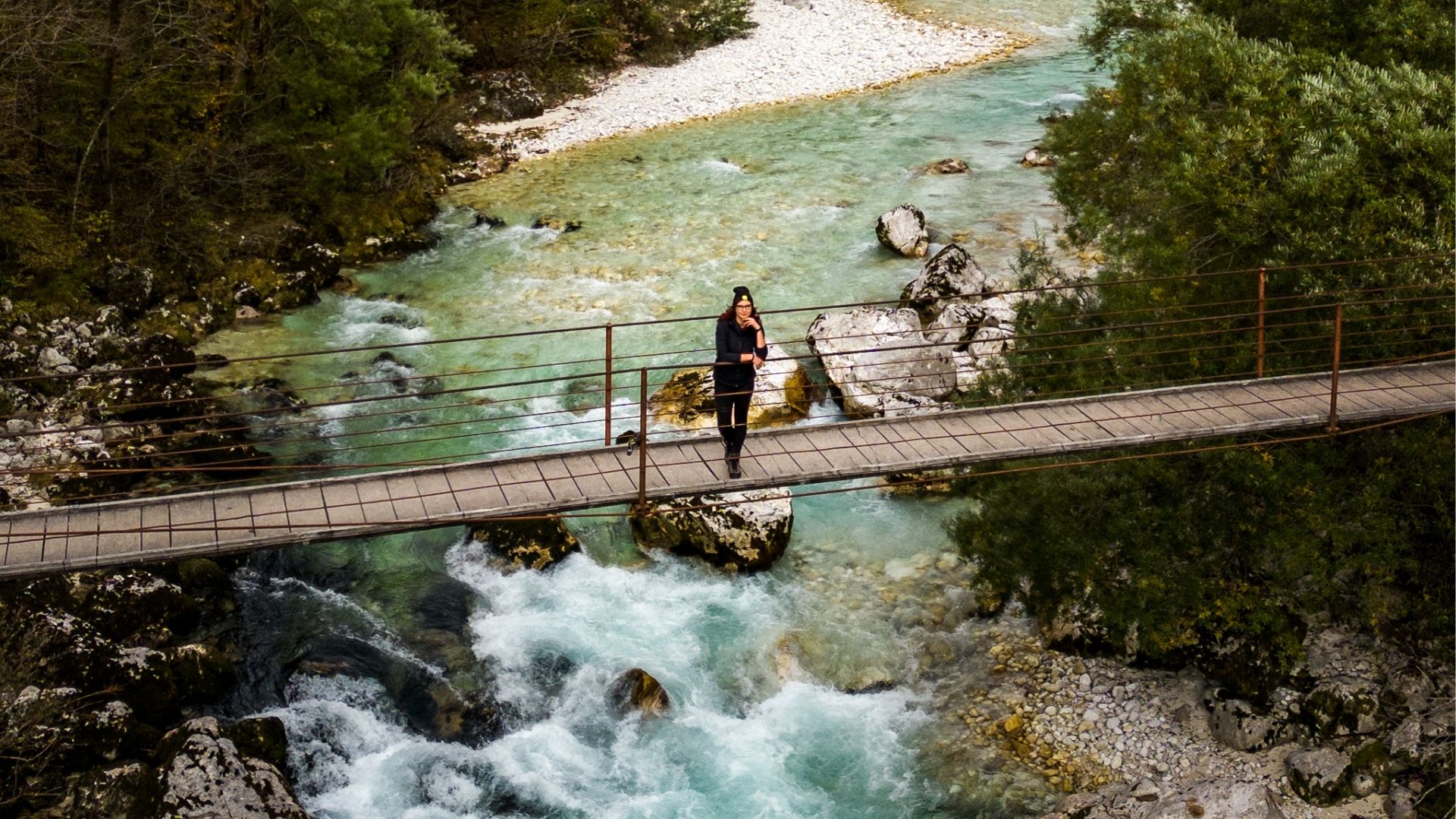
Traveling beyond Ljubljana reveals a Slovenia that’s richer, more varied, and often more surprising than visitors expect. From the riverside elegance of Maribor to the ancient streets of Ptuj, from Koper’s Adriatic blend of Venetian charm and working port life to Celje’s medieval grandeur, and finally to Nova Gorica’s modern cross-border spirit – each city offers a unique encounter with the country’s character.
The compact size of the country makes it possible to weave several of these destinations into a single trip. Whether you arrive for the wine harvest in Maribor, the carnival in Ptuj, a summer swim in Koper, a winter stroll through Celje’s old town, or a cross-border tasting tour in Nova Gorica, you’ll leave with a deeper sense of Slovenia’s diversity and warmth.
Exploring these cities is more than ticking sights off a list; it’s about finding the stories, flavours, and connections that make travel memorable. And in Slovenia, those treasures are never far from reach.
FAQs
1. How can Voye Global’s eSIM help when traveling through Slovenia?
Voye Global’s eSIM allows you to stay connected instantly upon arrival, avoiding the need for physical SIM swaps. It’s ideal for navigating between cities, booking last-minute tickets, and sharing your journey in real time.
2. Which city in Slovenia is best for wine lovers outside Ljubljana?
Maribor is Slovenia’s wine capital, famous for the world’s oldest grapevine, excellent wine cellars, and nearby vineyard tours in the Styrian region.
3. Can I get instant activation with Voye Global in Slovenia?
Yes. With Voye Global’s eSIM, activation takes just a few minutes, meaning you can be online as soon as you arrive, whether at an airport or train station.
4. What is the most unique annual event in Ptuj?
The Kurentovanje Carnival in February is a UNESCO-recognised festival featuring costumed Kurents who symbolically chase away winter – a colourful, high-energy celebration.
5. Does Voye Global offer flexible data plans for multi-city Slovenian trips?
Absolutely. You can choose plans that suit short stays or extended travel, and coverage works seamlessly across all the cities mentioned.
6. What coastal experiences can travelers expect in Koper?
Koper offers a mix of Venetian architecture, working port atmosphere, pebble beaches, and local markets filled with Adriatic seafood and Karst-region produce.
7. Can I use a single Voye Global eSIM across multiple European countries?
Yes. Many of Voye Global’s eSIM plans cover several countries, allowing uninterrupted connectivity as you travel beyond Slovenia’s borders.
8. Is Celje a good destination for families?
Definitely. Celje offers child-friendly attractions such as its medieval castle, city parks, and the nearby Lake Šmartno for outdoor activities.
9. Does Voye Global’s eSIM work in cross-border areas like Nova Gorica?
Yes. Voye Global’s eSIM maintains strong connections in border regions, making it easy to switch between Slovenian and Italian networks without disruption.
10. Are Slovenia’s smaller cities easy to explore on foot?
Most of them, including Ptuj, Celje, and Koper, have compact historic centers that are best enjoyed on foot, with plenty of pedestrian zones and scenic walking routes.

Seamless Mobile Data Everywhere







